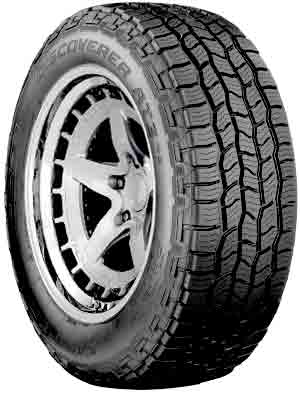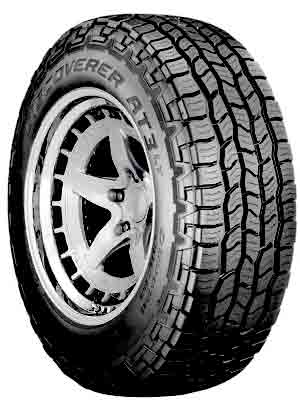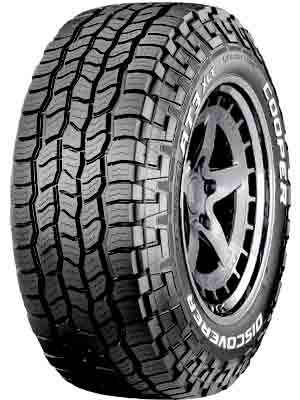Cooper Discoverer AT3 has three main variants, the 4S, the XLT and the LT. And all of these all-terrain tires go from least aggressive to most, and that way, Cooper provides you a much better pick according your driving needs. Let’s find out the most suitable tire for you!
Out of all, the Cooper Discoverer AT3 XLT is a better fit for minor off-road terrains, including a little bit of mud, and while the LT comes in the middle, the Discoverer AT3 4S offers a superb on-road traction and comfort, which feels no different than an average SUV highway tire.

Table of Contents
Tire Sizes and specs
Let me put things in a tabular form, so you can better understand what’s going on with each of these Discoverer variant.
| Cooper AT3 4S | Cooper AT3 LT | Cooper AT3 XLT | |
| Wheel Sizes | 15 to 22 inches | 16 to 18 inches | 15 to 20 inches |
| Total Sizes | 42 | 21 | 32 |
| Weight Range | 30 to 45 lbs | 38 to 54 lbs | 44 to 70 lbs |
| Speed Ratings | T and H | R and S | R and S |
| Load Ratings | SL and XL | C and E | C, D, E and F |
| Tread Depth | 12/32″ to 14/32″ | 16/32″ and 16.5/32″ | 16.5/32″ and 17/32″ |
Cooper Discoverer A/T3 4S

Cooper Discoverer LT

Cooper AT3 XLT

As you can see, the heaviest tire is the Discoverer AT3 XLT, having more tread depth range, and although it does not offer better speed ratings compared to AT3 4S, it’s on par with AT3 LT.
Moreover, unlike the 4S, the Cooper XLT and LT also don’t get to have XL and SL load ratings.
Tread Appearance
All of these tires have similar structure, consisting of 5 ribs, 2 for outer shoulders, and 3 central ones consisting of blocks running in pairs.
There are some very subtle differences in all of these tires, let’s start form the least aggressive option.
Cooper Discoverer AT3 4S
So this tire comes with thicker rib in the middle most. The blocks there have more width to them, and with that they are able to produce much better connection with the road.

The grip (when rolling straight) is very dependent on the central area of the tread, as that gets to bear the maximum pressure of tire/vehicle on itself. With more surface area of tread to road meet up, the AT3 4S offers shortest braking distances out of all.
Moreover, aiding to that are the closeness of the ribs. The longitudinal and lateral grooves the lugs make, are seen narrowest on this tire’s variant.
And if we consider the edges, though the tire makes staggered shoulders, the edges are seen least aggressive having smallest traction scoops, and thinnest sidewall lugs, comparatively.
These are designed to provide better handling capabilities on pavements.
Lastly, the tire also features more number of siping on all it’s blocks, providing better wet roads traction as well.
Cooper Discoverer AT3 LT

The AT3 LT variant is the middle ground of the Discoverer series.
And looks wise although it seems very similar to 4S, there are still two main differences.
One, it has less number of sipes, so wet traction is not on par with it’s little brother.
And two, it provides slightly wider tread voids, so with narrower middle rib, the same goes for dry traction as well.
Cooper Discoverer AT3 XLT
The Discoverer XLT is the most aggressive, featuring thicker sidewall lugs on it’s side which help this tire with off-road bite with lowered air pressure.

These lugs basically allow this tire to have larger footprint area in contact with the rocks and sand, and this allows with better climbing abilities.
The shoulder lugs of this tire are also equipped with bigger traction scoops, which act like spoons on mud, and dirt filled roads, throwing thick material backwards and generating a forward motion as a result.
Towards middle, though the tire has similar siping pattern like the LT variant, with wider grooves, the highway traction gets to be further limited.
Also Note: All sizes are 3 peak mountain snowflake rated, have 2 ply polyester with 2 steel belts and single nylon cap ply in their internal construction.
Comfort Comparison
The Cooper AT3 4S is the most comfortable on roads as its the most silent one here, despite all of them having whisper groove and pitch sequencing technology.
Tread noise gets generated a lot of way, and one of most significant is through the air, going in and out of the tread as the tire rolls, and most of it comes/goes from the shoulder lugs.
So what all these Discoverer AT3 variants do, is they place “tie bars” in between the shoulder lugs, and with it air gets restricted to flow in (look for tie bars in tread design).
The less air flows in the less noise gets rendered, as less particles get to hit around inside the grooves.
Though with wider grooves, the Cooper AT3 LT and XLT both gets to be a little bit more noisier in comparison.
Fuel Consumption
Fuel usage depends on rolling resistance a lot.
And it makes a lot of sense why Cooper AT3 4S gets to be most fuel efficient as being the lightest of all variants (having only SL and XL load ratings available), it puts the least amount of pressure on it’s lugs.
The Discoverer AT3 LT, as it gets to be 10 pounds heavier consumes more fuel in comparison, and the AT3 XLT which is even more heavier (20 lbs more compared to Discoverer 4S), gets to be least efficient in providing fuel economy.
Tread Wear Life
Tread life also depends on rolling resistance, but surprisingly there isn’t too much of a difference between all three variants.
That’s because there are other 2 factors at play here, tread depth, and rubber compound.
The LT and XLT variants get to have a more durable cut resistant rubber, and with higher tread depth, they take more time to wear off.
That’s why both LT and XLT have 60k miles warranty, whereas the AT3 4S gives 65k.
Dry Performance
The dry traction is basically calculated by directional and lateral grip, and with wider tread voids on Cooper AT3 4S, it gets to provide shorter braking distances (a measure of directional grip).
Similarly as the tire does not make as big of a mud scoops on shoulders, they also provide much better superior lateral g forces, allowing it to have shortest handling times as well.
The Cooper AT3 XLT is on the other end, yet still one thing to note is that it’s directional grip is on par with LT.
Wet Performance
On wet roads, the only thing that matters is water evacuation. A tire simply can’t not grip if there is water between it and the road.
So how this water gets cleared out? Well, through sipes and grooves.
Grooves actually clean up most of the water out, while the rest are managed by sipes, which contract to slurp in the water particles coming underneath.
Both of these ensure a tire neither slips nor hydroplanes (floats) on standing water.
The Cooper Discoverer AT3 4S gets to provide better overall values here, as it has the most number of sipes.
The other variants although lack in provide as much sipes, they still get to evacuate slightly larger quantities of water with their wider grooves.
So overall there’s isn’t a lot of difference, but still tests show that the Discoverer XLT gets to be the least efficient here.
Snow Traction
Out of all these tire variants, the Cooper AT3 XLT provides much better traction values, considering all types of terrains.
Although all tires have snow vices and are branded with 3 peak mountain snowflake ratings, the XLT simply gets to provide better snow grabbing abilities and with it snow to snow contact.
Snow basically has the tendency to stick better on other snow particles, whereas they don’t create the same amount of friction when in contact with the rubber.
That’s why with a heavier construction, the Cooper AT3 XLT puts more pressure on it’s lugs, and they then grab and lodge more snow to create that scenario.
Off road performance
Leading the pack here is again the XLT version, where LT only lacks due to it’s less thicker sidewalls, and the 4S is just not as durable nor have wide enough lateral/longitudinal grooves to clear out dirt in time.
With bigger mud scoops the Cooper Discoverer AT3 XLT not only throw bigger chunks of mud particles backwards to generate forward momentum, it also yields much wider tread voids to clear out the slushy mud, its tread gets to be the least susceptible to get packed.
(Though compared to other tires, even the XLT variant is not good enough for muddy terrains, generally speaking).
On rocks, though all tires have stone ledges, again wider grooves on XLT don’t allow stones to get stuck in that easily.
And when it comes to climbing on rocks and sandy terrains, the Discoverer XLT provide much better traction with its sidewall lugs. These make a thick pattern, pasting on a large surface area, so with lowered air pressure they get to provide ample increase in the overall footprint, resulting in better climbing abilities.
To Sum up
Out of all, the Cooper Discoverer AT3 4S is made for smooth pavements and highways, featuring higher speed ratings and smallest weight.
So with this tire you get maximum on-road traction in both wet and dry conditions, superior fuel economy and better tread life (though, with a small margin).
The Cooper AT3 LT comes in the middle of these two, and although it’s dry grip is on par, it’s wet traction is not as impressive.
Lastly, the Discoverer XLT features the most aggressive design with chunkier sidewall lugs, providing better off-road grip in sand, mud and rocky terrains. Though of course, you get a limited on-road grip


